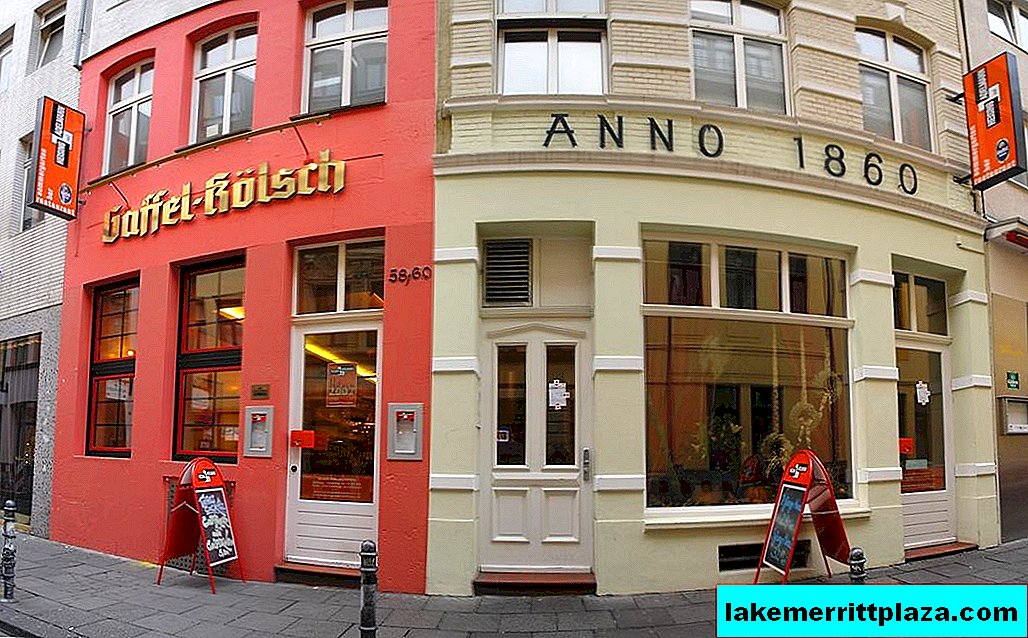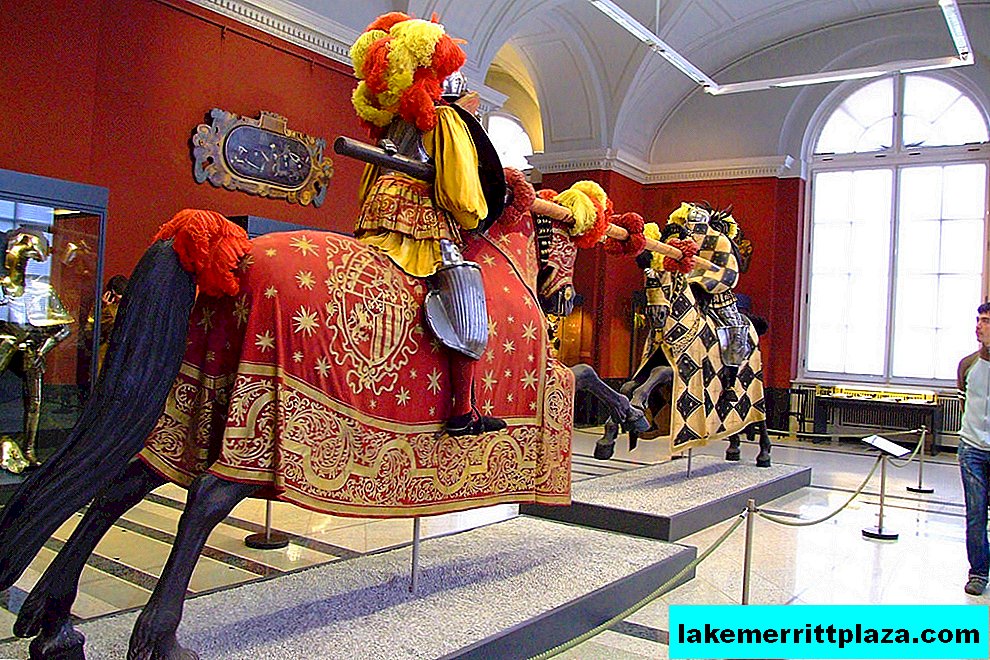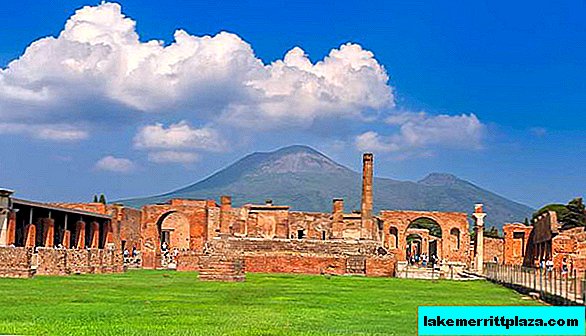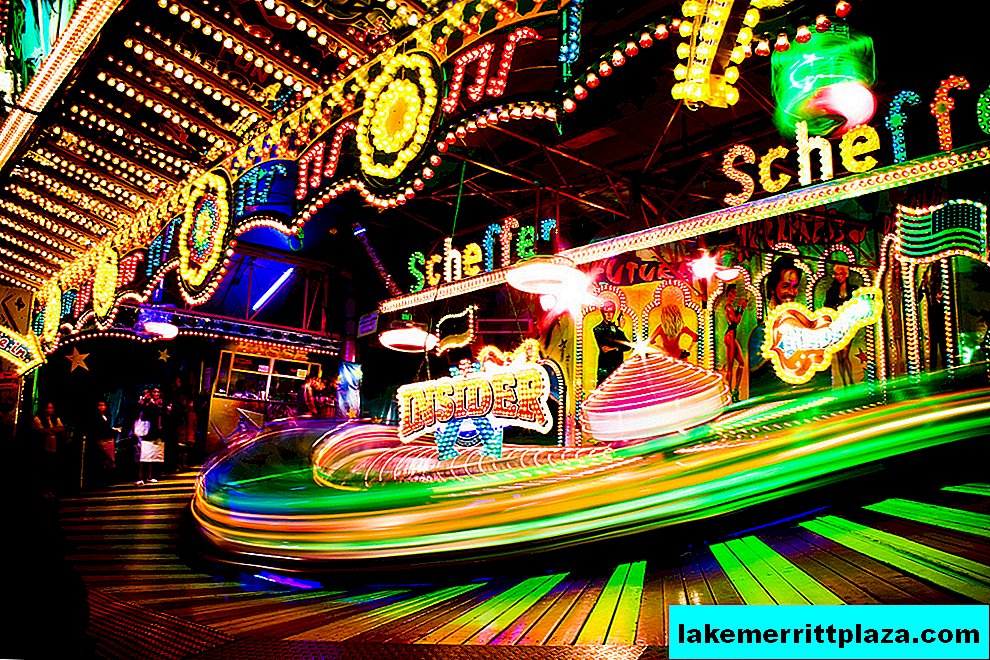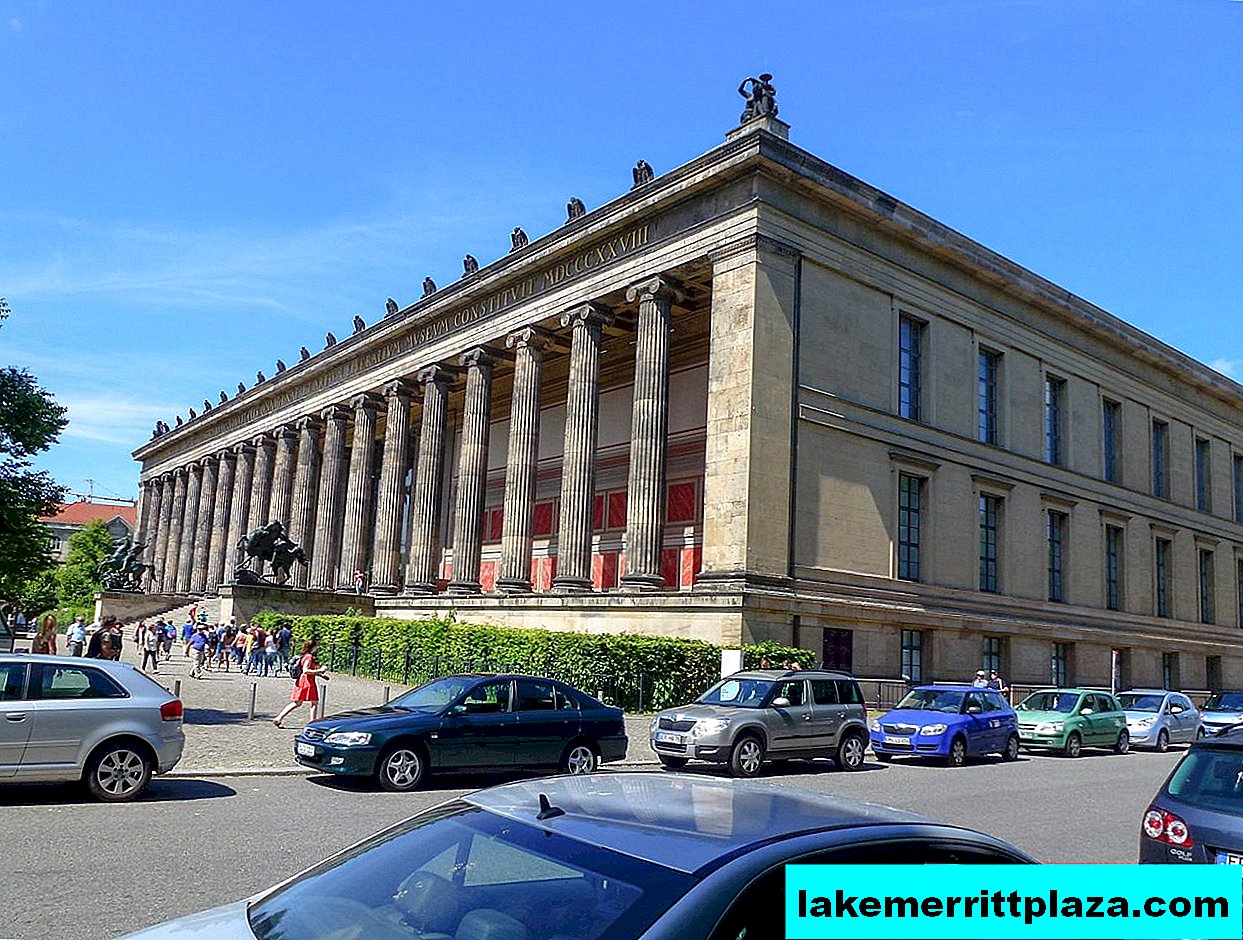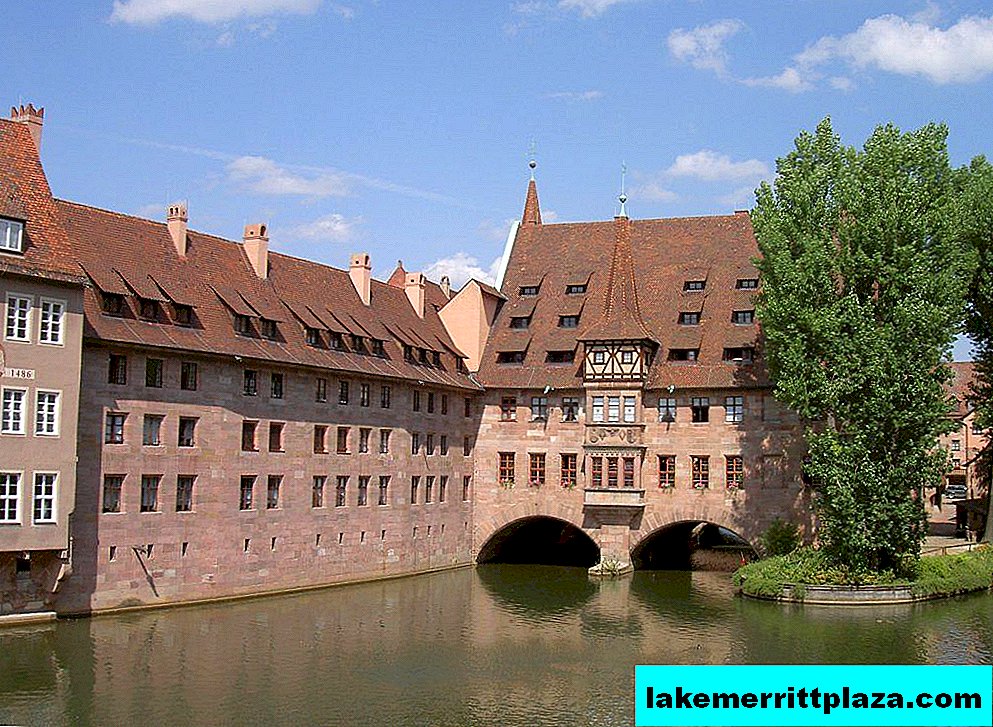Attractions Cagliari (Cagliari) - a bright sun, rocky coast, lush Mediterranean vegetation, pristine beaches. And, of course, architecture, which harmoniously combined the styles of not only different eras, but also peoples. Due to the fact that for centuries the city was a convenient stop on the busy sea route from Europe to Africa, battles were constantly fought for the right to own it, and it passed from hand to hand, which could not but affect its sights.

Palace Square
The main square of Cagliari is the Palace Square (Piazza Palazzo). Here is the Royal Palace (Palazzo Regio). Representatives of the nobility built their houses around it in former times, built the town hall, the Cathedral, the archbishop's house and other services important for the life of the city.
Opposite the Cathedral, near the former town hall, a small square adjoins the Palace Square - Piazza Carlo Alberto. Here, in former times, executions were carried out, including - beheaded the nobles.
Piazza Palazzo has been rebuilt more than once. Recent significant changes have occurred after the Second World War due to the fact that many buildings were badly damaged by the bombing. As a result, part of the historic houses was demolished, the area was expanded. Nevertheless, Piazza Palazzo managed to maintain a medieval flavor. And to emphasize the antiquity of the Palace Square, recently cars are not allowed here: now it is a pedestrian zone.
Royal Palace
The Royal Palace (Palazzo Regio) was built in the first half of the XIV century. by order of Peter IV of Aragon (Pietro IV d'Aragona) - and since then, kings have lived here for five centuries. At the beginning of the 19th century, when Napoleon’s troops occupied Torino, there was the residence of the Savoy ruling house (Casa Savoia).

In 1885, Palazzo Regio passed into the power of the city, due to which the interior rooms underwent serious restoration: it was decided to place the prefecture (Prefettura) and the administration of the province of Cagliari (Città metropolitana di Cagliari) in the building. The Council Rooms were decorated with allegorical frescoes by Domenico Bruschi.
It’s not easy to get inside the palace: first you need to arrange an excursion. Sometimes concerts are held here. In this case, you can see from inside the house where the kings lived, after buying a ticket.
Church of St. Mary
The Cathedral of St. Mary (Cattedrale di Santa Maria) is the main temple of Cagliari. Important Christian shrines are stored here - thorns from the crown of thorns of Jesus Christ, as well as the relics of the Sardinian martyrs. That is why pilgrims come here from all sides.

A tourist attraction appeared in the XIII century. after the Pisans seized the city and destroyed the main temple of Sardinia, dedicated to St. Cyclia. Accordingly, the city needed a new monastery. She became the church at the citadel of Santa Maria di Castello. After some time, the temple was given the status of a cathedral, retaining the name.
After that, large-scale transformations began in the cathedral, which ended only in the thirties of the last century. Therefore, the temple bears the features of different eras, and the main facade is decorated in Neo-Romanesque style. Inside the cathedral there are elements of Baroque and Romanesque styles, silver tones prevail in the interior, original frescoes are preserved.

At the temple there is the Sanctuary of the Martyrs. There are three chapels. In one of them, in the chapel of St. Lucifer, equipped with eighty niches where the relics of the saints are stored. There is also a monument to Maria-Josephine of Savoy (Maria Giuseppina Luisa di Savoia), which was buried inside the cathedral in 1810. De jure, Maria-Josephine was the Queen of France.
Archbishop's palace
The archbishop’s house (Palazzo Arcivescovile) is located between the cathedral and the Royal Palace, at Piazza Palazzo 4. It was first mentioned in 1300, but there is every reason to believe that the building appeared much earlier and the palace was the house of the judge.
For a long time the residence of the archbishop was here, but more important people lived. For example, during the time of Napoleon, the Sardinian king Carl Felice lived here, since the Royal Palace could not accommodate the entire courtyard.
The palace’s archbishop’s palace owes much of its current appearance to reconstruction, which was carried out in the 1930s. last century. On the side wall you can see the funeral inscriptions that belong to early Christianity. Inside the palace you can see the original structure of the ancient facade of the cathedral, a marble staircase in the hallway. The meeting room is famous for its elegant decor and numerous paintings. Various archaeological finds are also stored here.
Old town hall

The former town hall (Antico Palazzo di Città) is located on Piazza Palazzo, 6. The city hall was built in the 14th century. The attraction acquired its present appearance in the 18th century, when the facade was given the appearance of Piedmont baroque.
At the end of the XIX century. The city hall was transferred to a new building on via Roma, and the conservatory (Conservatorio di musica Giovanni Pierluigi da Palestrina) was placed in the former town hall. In the 70s. of the last century, the institution moved to via Bacaredda, and the house has been desolate for a long time.
In 2009, the palace was opened to visitors by exhibiting ethnographic (Fondo Etnografico Manconi Passino), ceramic museums (Fondo Ceramico della Collezione Ingrao), and the Sacred Art Fund (Fondo d'Arte Sacra della Collezione Ingrao). In the cellars of the building you can see antique tanks, which collected rain, stone-paved medieval floors, arched openings, decorated in the style of late Gothic.
There is also a representative office of the mayor.
Churches
There are a lot of ancient temples in Cagliari. Some of them are so old that they appeared long before the birth of Christ. For example, this refers to the crypt-cave, where Saint Restitut, one of the first Christians of Sardinia, found refuge in the fifth century. The city’s patron church, St. Saturninus, is not much younger: it definitely existed already at the beginning of the sixth century. The remaining sights of Cagliari are no less interesting, and their appearance is associated with interesting legends.
Basilica of St. Saturnine
The Church of St. Saturninus (Basilica di San Saturnino) is an ancient Christian church located on Piazza San Cosimo. Information of this attraction was first seen at Deacon Ferrando, biographer of St. Fabia Fulgenzia (Fulgenzio di Ruspe), who lived in the VI century. He was in the temple when he stayed at a nearby monastery.

It was not accidental that the church was named after the patron saint of the city, St. Saturninus of Cagliari: the basilica was built not far from its burial site, at the place where the martyr was beheaded in 304 for refusing to worship Jupiter.
In the XI century. the temple passed to the Benedictines, who restored the church in the Romanesque style. In 1324 the monastery, which was at the church, was destroyed in the course of hostilities - and the temple remained in desolation for a long time, while in the XVIII century. it did not resume service.
In 1943, the basilica was heavily damaged by bombing. After the war, it was restored and opened to parishioners. Now weddings are often held here. For visitors, the temple is open on Saturday from 10 to 13 and from 15.30 to 19.30
Basilica of Our Lady of Bonaria
The Sanctuary of Our Lady (Santuario di Nostra Signora di Bonaria) is a complex. It consists of a small church of the fourteenth century. and a large temple adjacent to its walls, which has the status of a small papal basilica. Attractions located on Piazza Bonaria.

The appearance of the church dates back to the time of the conquest of Sardinia by the king Alfonso of Aragon (Alfonso d'Aragona), who expelled the Pisans from here. In 1335, he allocated a small church and a monastery with it to the monks from the Order of Mercer.
In March 1370, a Spanish ship that sailed the Mediterranean Sea, fell into a storm. He was so strong that the sailors decided to throw all the cargo overboard, including a heavy box, to save him. As soon as he was overboard, the storm abated. The box nailed to the shores of Cagliari, not far from the church. It was found by the monks, and when they opened it, they found a wooden sculpture of the Virgin, which held the baby Jesus in one hand and a lighted candle in the other.
Since then the Basilica of Our Lady of Bonaria became a place of worship for pilgrims and sailors, and a nearby temple was erected to store the sculptures. Its construction began in 1704, ended in 1926. It is the largest basilica of the island.
Church of the Archangel Michael
The Temple of the Archangel Michael (Chiesa di San Michele), which is located on Via Ospedale, 2, originally belonged to the Jesuits. It adjoins a military hospital, which in former times was the House of Jesuit Obedience (ex Casa del noviziato).

The construction of the temple began in 1674 and lasted forty years. The church was consecrated in 1738, as evidenced by the memorial plate located to the right of the portal. In the niche of the upper part of the facade you can see a sculpture of St. Michael. In one hand holds a sword (symbol of faith), in the other - scales (sign of justice).
The temple is built in the Baroque style, its interior is decorated in the Rococo style extremely luxuriously. Inside, ancient frescoes, sculptures, stucco work, a beautiful mosaic dome attract attention. The walls of the temple are faced with multi-colored marble. Its eight chapels are connected by a long covered gallery that runs along the perimeter of the temple. There is also a pulpit with which in 1535 the emperor Charles V of Habsburg (Carlo d'Asburgo) spoke before the campaign against the pirates. The department was transported here from the church of St. Francis that destroyed in the XIX century.
Crypt of Saint Restitution
The cave crypt and the Church of Saint Restituta (Cripta e Chiesa di Santa Restituta) can be found on Via S. Efisio. Everything here is saturated with antiquity: the cave was used for religious rituals in pre-Christian times. The place is gloomy, gloomy, a special atmosphere is emphasized by the echo of drops falling from the vaults. In V Art. here the holy Restitut found refuge, which is considered one of the first Christians of Sardinia. On the walls of the crypt you can see its image: in the XIII century. the cave was decorated with frescoes. There are also altars dating back to the fifth century.

The crypt was used as a temple until the end of the 13th century, after which it was abandoned. In the XVII century a temple was built over it. Its appearance is connected with the rivalry for the title of Primate of Sardinia and Corsica (il titolo di primate di Sardegna e Corsica) between the archbishops of Cagliari and Sassari (Sassari). During the rivalry, they organized excavations of ancient burials and places where the early Christians performed rituals. During these searches, the relics of St. Restitution (truth, claims that the remains belong to the saint, many questioned).
During the Second World War, the townspeople hid from the bombing in the cave. Today, for tourists, the crypt is open, admission is free, it works in the morning. The church is closed: it is being restored.
Church of St. Anne
The collegiate church of St. Anne (La collegiata di Sant'Anna) can be found on Via Domenico Alberto Azuni. This is the parish church of the Stampace district, which is located at the top of the historic center.
The history of the basilica began in the 13th century, when a small church was built on the heights of the townspeople. Five centuries later, they decided to demolish it in order to erect a more spacious building in the style of Piedmont Baroque. Construction took a long time due to lack of funds. The right bell tower was built only in 1938.

As a result, the mention of the construction of the temple became a household name. When the townspeople use the phrase: “La costruzione di Sant'Anna”, they sarcastically speak of something endless that will never end, comparing the event under discussion with the long and hectic construction of the Stampache parish church.
As soon as the temple was opened, the Second World War began, and numerous bombardments caused serious damage to the structure. Therefore, after the end of hostilities, the temple had to be restored. The reopening of the Church of St. Anne took place in 1951.
Inside the temple there are many works of art. Among them is a multi-colored altar in the chapel of the Sacred Heart of Jesus, a neoclassical black altar dedicated to the Duke Amadeus IX of Savoy (Amedeo IX di Savoia il Beato). Also here you can see wooden sculptures of saints Jacob and Anna (santi Anna e Gioacchino) with Jesus in their hands, a painting by Giovanni Marghinotti, which depicts the Redeemer among the angels.
Church of St. Augustine
The Church of St. Augustine (Chiesa di Sant'Agostino) is located on Via Lodovico Baylle, 80. The facade of the basilica is not interesting, so a tourist can easily walk past the church without recognizing the religious structure. Nevertheless, the Church of St. Augustine is the only example of Renaissance architecture in the city.

A temple was built in the 16th century, and it was originally conceived as a cloister of hermits, which explains the simple appearance of the facade that faces the east side. There is also a more interesting entrance with Largo Carlo Felice, which leads to the temple’s original courtyard. Inside the church there are many frescoes, a ceiling trimmed with rosettes. Not completely plastered walls reinforce the feeling of antiquity. Also stands out the altar, decorated in the Baroque style, there are several statues of saints.
Recently, scientists discovered traces of ancient Roman buildings from the church. Therefore, archaeological work is constantly carried out around it, which is why the temple is periodically closed for visiting.
Defense facilities
Since Sardinia was often attacked, to protect Cagliari at the beginning of the XIV century. built defenses: powerful fortresses, bastions, towers, walls. They not only defended against enemy attacks, but were also used as an observation post. From the towers, both sea open spaces and land were clearly visible.
And only after in 1861 the island became part of the united Italy, the city lost the status of a “defense fortress”. Therefore, it was decided to demolish part of the walls. Those of them that did not interfere with the development of urban architecture were preserved.
Fortress of St. Michael Saint-Remy

Fortress of St. Michael (Castello di San Michele) is located on a hill on the slopes of which the park of the same name is located. The attraction is located four kilometers from the city center on Via Sirai.
On the edges of the medieval castle you can see three towers. A moat has been dug outside its walls. This is the oldest fortress of Cagliari, which has survived to this day.: it was built in the tenth century. At first, the castle was used only as a defense structure. Then the fortress from 1350 to 1511. became the residence of the noble family Carro (Carroz). At this time, a park appeared here.
In the XVII century. a plague broke out in the city, and it was decided to use the fortress, which by that time had long stood abandoned, like a hospital. In other words, isolate patients in it. At the end of the epidemic, the castle was fortified to fight against the French in the XVII-XVIII centuries. In 1940, the Navy was based here.
Currently, the building is well preserved and open to tourists. It hosts temporary exhibitions, theater performances. The hill overlooks the surroundings.
San Pancrazio Tower

The San Pancrazio Tower (Torri di San Pancrazio) is located on Piazza dell'Indipendenza, at the highest point of the Castello quarter. The Pisans built a landmark in 1305 to protect Cagliari from Saracen pirates and Genoese. Three of her walls are solid to defend the city, narrow small holes are made in them. The fourth, which faces Castello, has balconies on four tiers. At the bottom of the building is the gate of the same name, through which in former times it was possible to get to Castello.
San Pancrazio is the highest tower of Cagliari: at the moment its height is 36 m, the wall thickness is 3 m. In former times it was much higher, but the bombing attacks of the British (1701 g), Spaniards (1717), partially destroyed it. In 1793, when Cagliari attacked Napoleon’s troops, San Pancrazio lost the summit.
When the Aragonese dynasty began to rule the city, a prison was marked in San Pankrazio. In 1906, the building was restored. Now the tower is open for tourists, and from its observation deck offers a magnificent view of Cagliari and the surrounding area.
Elephant Tower

Elephant Tower (Torre dell'Elefante) is located on Piazza S. Giuseppe. This is the second largest tower of Cagliari: its height is 31 m. The landmark was built in 1307, and named after one of the symbols of Pisa (Pisa) - an elephant, the sculpture of which was installed 10 meters above the ground.

Many call Torre dell'Elefante the twin of San Pancrazio: it also has four tiers, three blank walls, one with balconies. Below is the portal that served as the entrance to Castello. She has a similar fate: at one time a prison was also placed in her. Near the tower on Piazza Carlo Alberto there was a place of execution, and on its walls hung the heads of severed people. Some of them had fun there for several years. Therefore, locals believe that on windy nights from the site where people were dying, the voices of their souls are heard.
Now access to the tower is open for tourists. It’s hard to go upstairs, but the view of the city streets and the bay is enchanting.
Bastion of Saint-Remy
The Bastion of San Remy is located at Piazza Costituzione. Built it at the end of the XIX century. instead of the dismantled fortress walls that connected Castello with other quarters of Cagliari. The bastion was named after the baron of San Remy, the governor of Piemonte, on whose orders the landmark appeared.

The Bastione di San Remy is an impressive building with high arched windows on its sides. A double staircase leads upstairs and ends near the Arc de Triomphe, bypassing which you can get to the Umberto I terrace with benches and palm trees. It offers a magnificent view of the surroundings. From the rear, the bastion looks absolutely impregnable - these are powerful walls that rise above sheer cliffs.
Indoor passage is equipped inside the building. First, a banquet hall was located here, during the First World War - a first-aid post. In the 40s. XX century Here lived people whose homes were destroyed by the war. Now the indoor passage has been restored, and art exhibitions are held here.
Museum Citadel
Several Cagliari museums are located in the building of the former Citadel, which is why the museum complex is called La Cittadella dei musei. The fortress is located at the highest point of the Castello area, the entrance is from Piazza Arsenale 1, Arsenalnaya Square.
The Citadel appeared in the XVIII century. at the site of dismantled defense structures. Until 1825, an arsenal was located in its camps. During World War II, the building was often the target of air raids and bombing. The restoration of the fortress began in 1965 and lasted fourteen years.
Currently, the walls of the former fortress display:
- Archaeological Museum;
- Anatomical Wax Museum "Susini";
- National Art Gallery;
- Stefano Cardu Art Museum of Siamese Art.
The Citadel also has facilities for temporary exhibitions, conferences, and a restaurant. Since the fortress is located on a mountain, a magnificent panorama opens before the visitors of the old fortress.
Archaeological Museum
The National Archaeological Museum (Museo Archeologico Nazionale di Cagliari) is located at Piazza Arsenale 1. It houses unique exhibits - bronze figures and other artifacts dating back to the Nurag era. It got its name from the type of towers that were distributed on the island from the second half of the second millennium BC. e. and up to VIII Art. BC.

The history of the museum began in 1800, when Viceroy Carlo Felice organized an archeology and natural history cabinet in the halls of the Viceregio Palace. Two years later, museum exhibits became open to the public. In 1806, the exposition was presented to the university, after which it moved to palazzo Belgrano.
The museum appeared on Arsenalnaya Square in 1993. Its exhibits are located on three floors and are arranged in such a way that the visitor in chronological sequence familiarized with the history of Sardinia from the Neolithic to the late antiquity. Among the exhibits are pottery, a Phoenician faience necklace, Punic and Roman coins.
Anatomical Wax Museum "Susini"
In the anatomical wax museum. Clemente Susini "(Museo delle cere anatomiche intitolato a Clemente Susini) contains one of the most interesting collections in the world. Here are presented fragments of the human body molded from wax (head, muscles, pharynx, liver, etc.), which give a detailed idea of what do different organs look like.
The collection appeared between 1801 and 1805. thanks to the initiative of Professor Francesco Boi. Clemente Susini worked on wax sculptures in Florence. The models he created in Cagliari arrived in 1805 and for about half a century were in the Museum of the Royal Palace. Then the exhibits were transferred to the university, and they were transferred to the Palazzo Belgrano. After that, the museum moved several more times until it ended up in the Citadel.
National Art Gallery

The National Art Gallery (Pinacoteca nazionale) appeared in the second half of the 19th century, when many church values passed into state ownership. The museum is located on three floors in chronological order: the oldest exhibits are located on the last tier.
The halls of the National Art Gallery feature works by Sardinian artists of the 16th-18th centuries. Among them are paintings by Pietro Cavaro, a local native, one of the most famous painters of Sardinia. There is also a collection of Sardinian and Catalan altar paintings of the XV-XVI centuries. The ethnographic collection attracts attention, among the exhibits of which are Sardinian fabrics, furniture, ceramics, weapons.
Siamese Art Museum
The Museum of Siamese Art (Museo civico d'arte siamese Stefano Cardu) was created after Stefan Cardu in 1914 presented the city with a collection that he acquired in Siam while traveling around Indochina. At first, the exhibits were exhibited in the Municipal Palace (palazzo Civico), then - in the art gallery. Since 1981, the exposition has been housed in the Citadel.
The Siamese collection consists of paintings that depict different stories from the life of the Ramakien people, manuscripts, Buddhist sculptures made of ivory bronze, wood, silver. There are also a lot of porcelain, various figurines (okimono, netsuke). Of particular interest is the collection of oriental coins, weapons.
Archaeological excavations
Cagliari is a very old city. Numerous excavations indicate that the settlement existed already in the XVIII century. BC e. First of all, this is evidenced by the largest necropolis in the world that appeared here in the Neolithic era. Also on the territory of the city, archaeologists discovered the ruins of residential buildings, the construction of which dates back to the 1st century. BC. The huge amphitheater suggests that during the Roman Empire, life was in full swing in Cagliari.
Punic necropolis

The Punic necropolis (Necropoli Punica di Tuvixeddu) is located on a hill, Colle Di Tuvixeddu, which means "hill of small holes" in Sardinian. It was not so randomly named: it contains many grave recesses. Some of them are decorated with well-preserved bas-reliefs.
In total, on the territory of the necropolis, archaeologists have discovered more than a thousand graves that belong to the Carthaginian and Roman periods.
The first burial sites appeared here during the Neolithic period, as evidenced by flint tools and ceramics discovered in ancient graves (3800-2900 BC).
The most interesting grave is the Serpent's Grotto. Its outer part is decorated with a facade, on the pediment of which two snakes are depicted. Inside there are two burial chambers, on the walls of which you can see inscriptions telling about people buried here. According to them, a married couple, Atilia and Cassius Philip, are buried here. When the husband became seriously ill, the wife asked the gods to let her die instead of her husband, and they complied with her request. A woman was buried in this hill. Subsequently, when Cassius died, his ashes were buried near Atilia.
Roman amphitheater

The Roman Amphitheater (Anfiteatro romano) is hosted by via Sant'Ignazio da Laconi. The attraction organically fits into the surrounding rocks. At the top of the structure is the city street, which allows you to view it from different directions.
Anfiteatro romano appeared in the I-II centuries. AD, when Sardinia was ruled by the Roman Empire. Half of the structure was cut down in a limestone rock, and local limestone blocks were used to build the southern part. The amphitheater accommodated 10 thousand spectators, and fights between animals, gladiators, and also specially recruited fighters took place in its arenas. Here, in front of a crowd of jubilant spectators, death sentences were carried out.
Due to the spread of Christianity, gladiatorial battles became unpopular, and in 437 they were banned altogether. After that, the amphitheater in Cagliari was desolate for a long time, and local residents and rulers used its stones for the construction of new structures.
The ruin of the attraction took place until the middle of the 19th century, until Anfiteatro romano came under the authority and protection of the city. For some time now various performances have been held here, for which part of the amphitheater was covered with iron and wood. Such actions have caused a lot of criticism from archaeologists who claim that such structures harm the sights. Now the authorities have reconsidered their position, and soon a restoration is planned, aimed at returning the amphitheater to its original form.
Villa Tigelia

Villa di Tigellio is located on Via Tigellio 18, close to the Botanical Garden and the Roman Amphitheater. This place is not a villa in the literal sense of the word: here are the ruins of buildings whose appearance dates back to the 1st century. BC. Previously, scientists believed that there was a villa of the famous Sardinian musician Tigelio (Tigellio). Later it was discovered that he had nothing to do with these structures, but the name was fixed.
Archaeological research has confirmed that there were three main buildings that were inhabited until the fourth century. In one of them, scientists found a mosaic-tiled floor, frescoes, in the other - plaster ornaments, several vertical columns, and places for collecting rainwater.
Theaters
There are a lot of theaters in Cagliari, each of which has its own history and occupies a special place in the life of the city. Almost all of them appeared after the Second World War: theaters that existed before the outbreak of hostilities were destroyed by bombing. Currently, the main of them are two temples of Melpomene - the Teatro Messimo and the Teatro Lirico.
Theater Messimo
Teatro Massimo is located on Via Edmondo De Magistris. It was built inside the old steam mill of Mr. Merello, who, together with another entrepreneur, Ivo Mazzei, decided to build a theater here.
The construction was completed in 1947. As a result, one of the largest theaters in Italy was created, which was designed for 2.5 thousand, and its area was 4.5 m2. Here they showed not only theatrical performances, but also films. In the 70s. the owners of the theater decided to demolish it in order to build several buildings. In 1981, the Massimo Theater was reopened and worked until a serious fire broke out in it, after which the theater closed.
In 2004, one of the heirs of the founder of the theater, John Merrello, broke the contract with the heir of the Mazzei family, and proceeded to restore the building. At the same time, the external facade, balcony, and some other objects were demolished.
The new theater was opened in 2009. It has two rooms. One is designed for 752, the other - for 202 places. Since then, many opera singers and important theatrical figures have performed in its walls.
Liriko Theater

The Lirico Opera House (Teatro Lirico) is located on Via Sant'Alenixedda. It began to be built in 1971, and finished in 1993. The purpose of the construction was to eclipse the Civic Theater, which was destroyed by fire in 1942.
At the moment, Teatro Lirico is a modern building with 1650 seats. In addition to the large stage, there are rehearsal rooms, a bar, a restaurant, offices, a bookstore. The red room is designed for conferences and educational events. A library is adjacent to the main building.
Where to relax
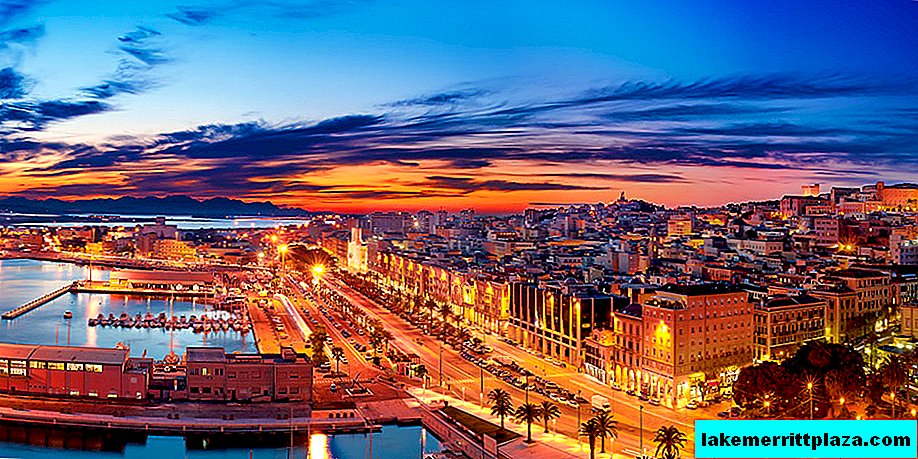
Cagliari is a very green city. Another plus is that many parks are located very close to the center. Walking along the shady alleys, here you can admire the lush Mediterranean vegetation, watch the life of various birds. If you wish, you can go to the beach. Here is one of the longest beaches in Italy.
- Read also: the best beaches of Sardinia
Botanical Garden

The entrance to the Botanical Garden (Orto Botanico) is located on Via Sant'Ignazio da Laconi, 1, one kilometer from the Cathedral. It was discovered in 1864, and after a decade, there were over 193 plant species. During World War II, the garden was blown up because cavalry was stationed on its land. Therefore, after the war ended, it took a lot of effort to put the Botanical Garden in order.
Now Orto Botanico occupies 5 hectares, and on its territory there are a thousand plants, among which there are very rare samples. The Mediterranean flora grows in the open. For some plants that were brought from South America, Australia, greenhouses were created. Fans of antiquity can look at the ancient Roman tanks installed here.
Entrance to the territory of the Botanical Garden is paid.
Monte Urpini

Parco di Monte Urpinu is located on the hill of the same name, not far from the center of Cagliari. The main entrance is on Viale Europa.
Parco di Monte Urpinu is considered one of the most beautiful parks in Cagliari. There are a lot of trees, flowers. The park has a lake, which is inhabited by sea turtles, flamingos, swans, peacocks. From the top of the hill offers a beautiful view of the city, the bay, the ponds of the park Molentargius. Tennis courts, football fields, children's playgrounds are equipped for athletes.
Molentargius Park
The Molentargius Regional Park (Parco Naturale Molentargius-Saline) is a nature reserve where a lot of waterfowl, animals, reptiles live. Among them are storks, herons, flamingos, cormorants, turtles, nutria.
The main entrance to the park is located on Via la Palma, the area exceeds 1.6 thousand hectares. There are a lot of ponds, paths, alleys. Both pedestrian and bicycle paths are laid. You can also explore the park by choosing a water route.
Poetto Beach

The length of the beach Poetto (Spiagga di Poetto) is more than seven kilometers. There are both paid and free sites. In summer, the beach is very crowded, especially a lot of people in its southern part. Therefore, if there is a desire to relax without a crowd, it is better to come here in the second half of September, when the sea is still warm, and the vacation for many people has ended.
The infrastructure here is very developed: there are bars, restaurants, discos, a yacht club. It is possible to rent sun loungers (including for the disabled), umbrellas and other beach accessories. In the second half of summer there is an open-air cinema. On weekends or when there are a lot of people on the beach, the prices here are much higher.

